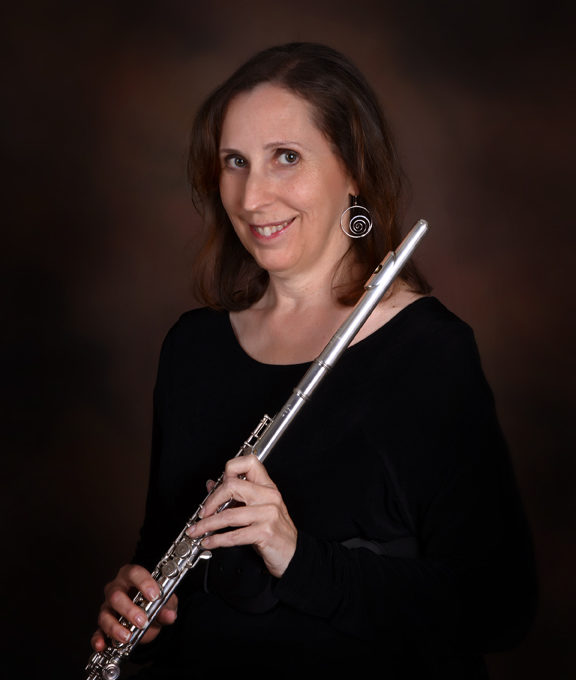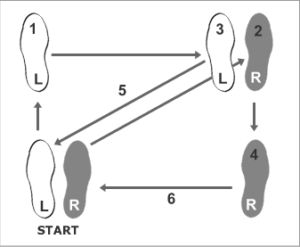Meter Matters!
by Catherine LeGrand
A strong feeling of meter (time signature), together with rhythmic precision, contributes to a convincing performance. Try these exercises, software, and Apps to improve your meter, rhythm, and sight reading.
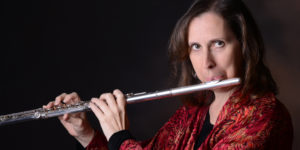
Throughout my over 30+ years of teaching and while judging countless competitions, I have witnessed that a strong feeling of meter (time signature), together with rhythmic precision, contributes to a convincing performance. I teach (and use!) several simple practice techniques to improve understanding of meter. I also teach with music theory software and apps to target improving specific rhythmic skills.
Practice Techniques to Improve Meter
Outline Beats
Working phrase by phrase, play only the first note of each beat, maintaining the pulse. This helps you hear which notes are on the beats and helps you to think in larger rhythmic units. Try to feel each measure in whole or half bars.
Step It Out
Create patterns of whole measures with your feet. Employ simple stand-in-place dance steps to feel strong downbeats and the relative importance of other beats in the measure.
- for 2/4, 6/8 and 2/2 (left/right)
- for 3/4 and 9/8 (left/right/left, right/left/right)

- for 4/4 and 12/8 (left/right/left/right)
If you have significant difficultly “stepping it out,” try conducting while speaking the rhythms.
Simplify
Practice the rhythm of all the notes in a passage on the same pitch, maintaining the pulse while creating convincing phrases. Make the rhythm sound like speech patterns—like you are telling a story or having a conversation.
Also practice the rhythm of only the articulated notes on one pitch, maintaining their relative metrical positions. Combination tonguing patterns can cause us to slow down. Mastering the rhythm of the articulations alone before adding the actual pitches improves both rhythmic precision and metrical feel.
Pattern Recognition and Substitution of Rhythmic Units
Learn and visualize which rhythms (both notes and rests) are equivalent. Consider how various combinations of rhythmic units can create one complete measure in different meters. 
Improvise 4 measures of rhythms and rests. Improvise another 4 measures, exchanging some rhythmic units for different rhythmic units with the same durations. Notice that the length of the measures match. Remember that rests are notated silences and always give them their exact values.
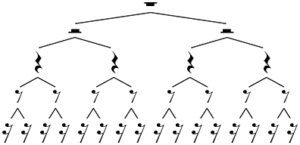
Combine Techniques—Be creative to solve problems.
Example: If one beat of sixteenth notes in a passage is difficult for you, substitute a quarter note for those 4 notes in the passage. Then add back the rhythm of the 4 sixteenth notes on one pitch, and, lastly, restore all 4 written pitches.
Also improve your sight reading!
Incorporate these practice techniques in your daily practice. A strong framework of meter and rhythm will help you play both confidently and convincingly, even when sight reading.
For some general advice on sight reading check out my 2012 blog article, “Catherine’s Steps to Better Sight Reading.”
Websites, Software and Apps for Improving Rhythm Skills and Sight Reading
Rhythm Skills
Software
With targeted exercises for beaming, meter recognition, rhythm notation, rhythmic subdivision, rhythm tapping, polyrhythm, and ties, Musition by risingsoftware.com is my favorite music theory software for improving rhythm.
IOS Apps
Android Apps:
- Rhythm Teacher: Music beats
- Music Rhythm Master
Sightreading
Websites
IOS App
- Rhythm Sight Reading Trainer by Rolfs Apps
Try regularly incorporating the practice techniques of rhythmic outlining, simplifying, “stepping it out”, and rhythmic substitution into your practice. Take time to practice specific rhythm skills away from your flute by using targeted software and apps. Your performances will be both more confident and more convincing. As a bonus, you will also improve your sight reading!
Catherine LeGrand serves as Adjunct Professor of Flute at Campbell University and joyfully tends a large private studio for students of all ages and levels in North Carolina and on the Internet. She was a pioneer of interactive Internet flute lessons, accepting her first online students in 2000. Her ensemble classes, summer workshops, and musicianship classes have helped dozens of flutists refine their skills.
Catherine performs regularly with pianist Kenneth Grigg as the duo Senza Misura. She has three albums in current release including Inspirations: Music for Solo Flute. Her websites and blogs have provided resources on breathing, music-making, and creative pedagogy since 2001. Her teachers include Keith Underwood, Paige Brook, Loren Lind, Kyril Magg, Jack Wellbaum, Robert Cavally, and June Warhoftig; Catherine received her B. M. and M.M. from the University of Cincinnati, College-Conservatory of Music with additional studies at Temple University in Philadelphia.
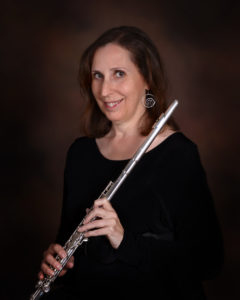
Catherine served as Principal Flute of the Houston Grand Opera’s Texas Opera Theater Orchestra, Piccolo of the Lexington Philharmonic (KY), and performed frequently with Houston Symphony. She has also performed with Grand Teton Festival Orchestra, West Virginia Symphony, and Houston Ballet Orchestra.
Over the years, Catherine’s students and former students have achieved many national honors. Among her previous teaching contributions, she was Flute Instructor and Flute Choir Director at the School for Creative and Performing Arts in Cincinnati, Flute Consultant at the High School for Performing and Visual Arts in Houston, and Instructor of Flute at San Jacinto College.
Catherine enjoys combining her passions for teaching, performing and traveling as a guest artist and clinician. For more information about Catherine and her teaching please visit www.catherinelegrand.com and www.myflutorials.com.

